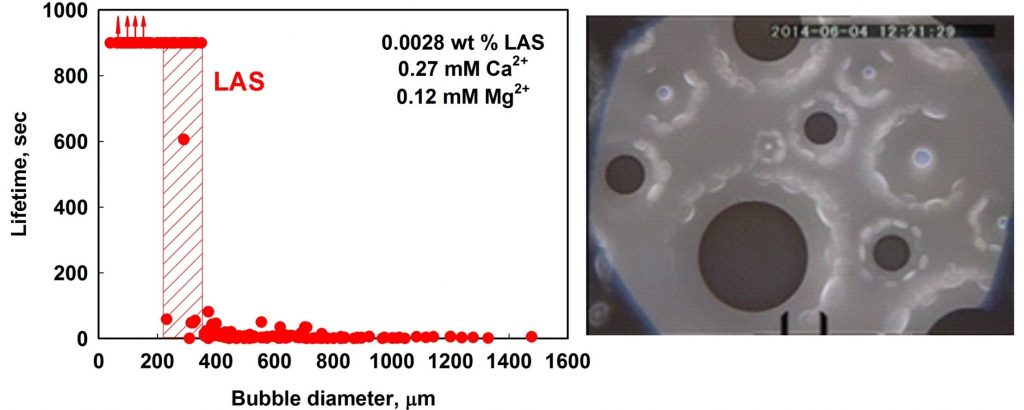Factors affecting the coalescence stability of microbubbles

Systematic experiments are performed to determine the factors affecting the coalescence stability of microbubbles, attached to an air-water interface. We studied the effects of bubble size, surfactant concentration, presence of co-surfactants, and relative humidity of the ambient atmosphere on the lifetime of microbubbles, with diameter varied between 300 and 2000 μm. The obtained results show that the bubble lifetime depends significantly on the bubble size, when the surfactant concentration is around or below the critical micellization concentration (CMC). Bubbles with diameter below 500 μm may have a lifetime longer than 15 min, while the bubbles with diameter above 1000 μm live for less than 10 s, under otherwise equivalent conditions. The stability of bubbles with intermediate size exhibits stochastic characteristics – some bubbles are stable for more than 15 min, whereas others coalesce for less than 1 min. This significant effect of the bubble size on the bubble lifetime is explained with the different compressing pressures, squeezing the foam film surfaces, for big and for small bubbles. The effect of water evaporation from the foam films is particularly important in these systems, as it leads to much thinner and less stable foam films for the bigger bubbles. Concomitantly, the increase of the relative humidity of the ambient atmosphere leads to larger film thickness and higher stability. These effects are important when analyzing the stability of foams, containing bubbles with different sizes, and used in atmosphere with variable relative humidity.

